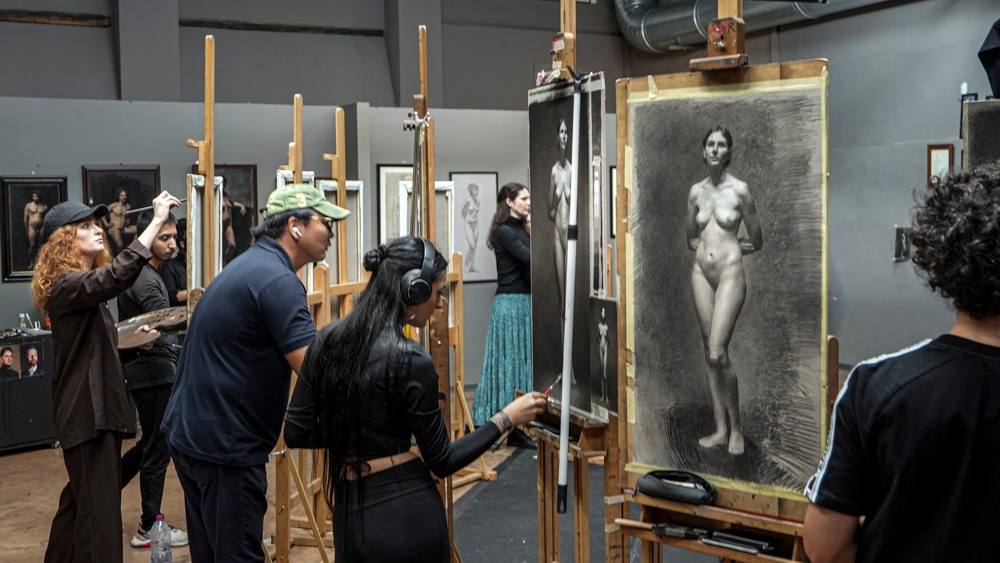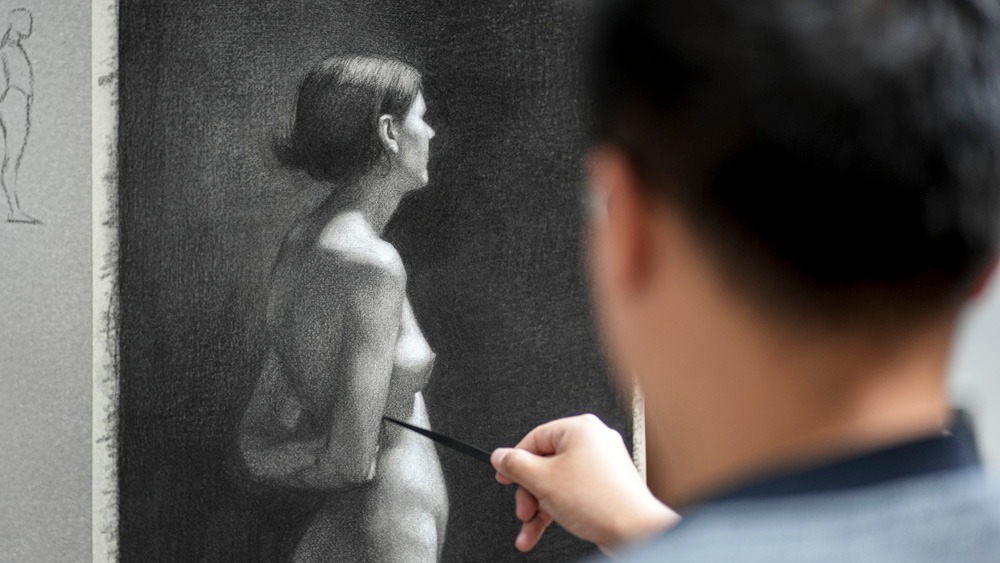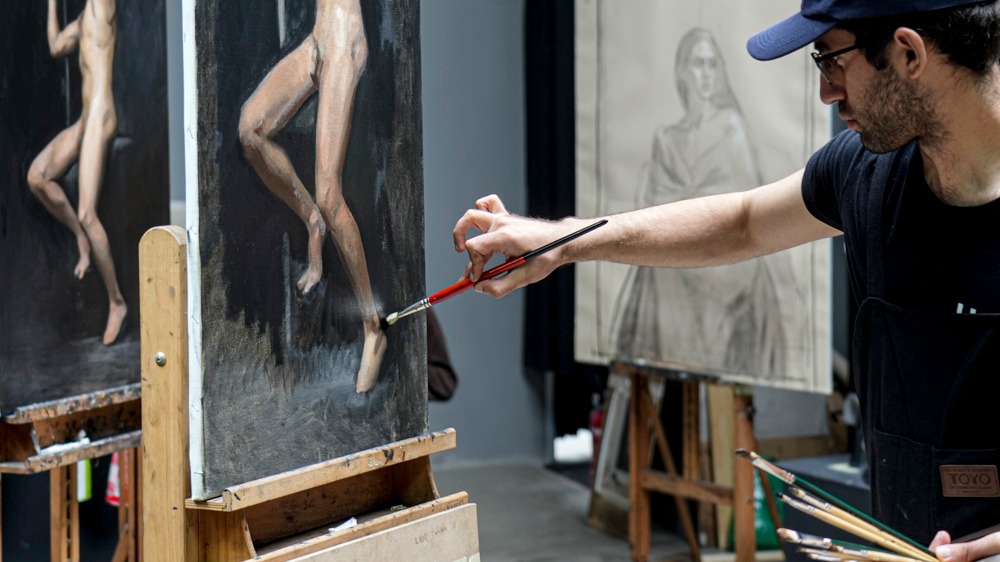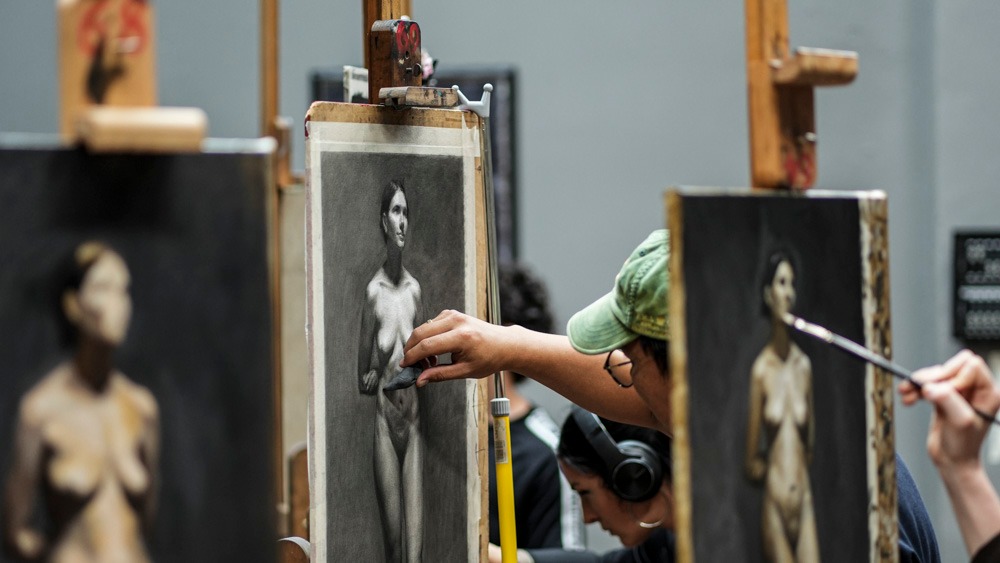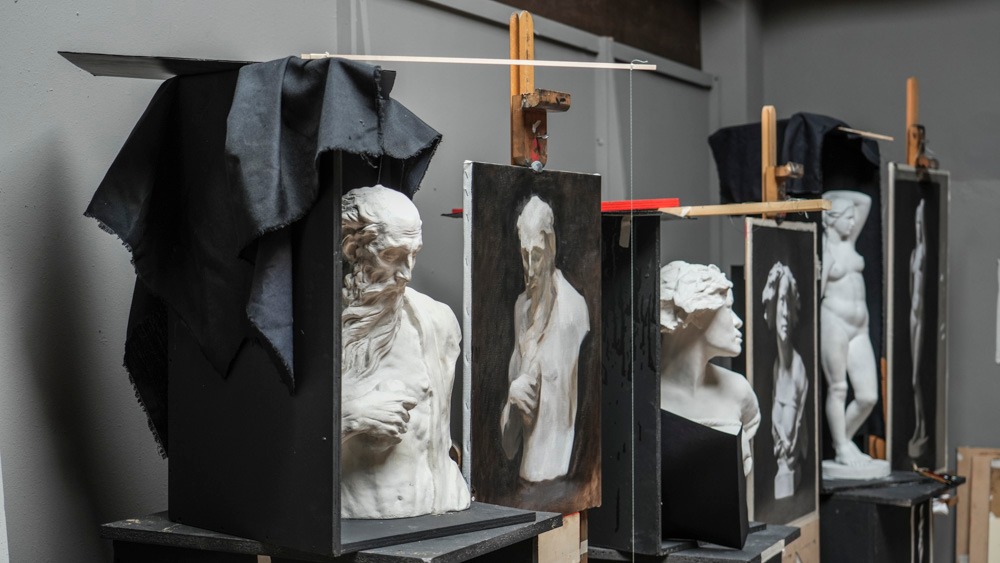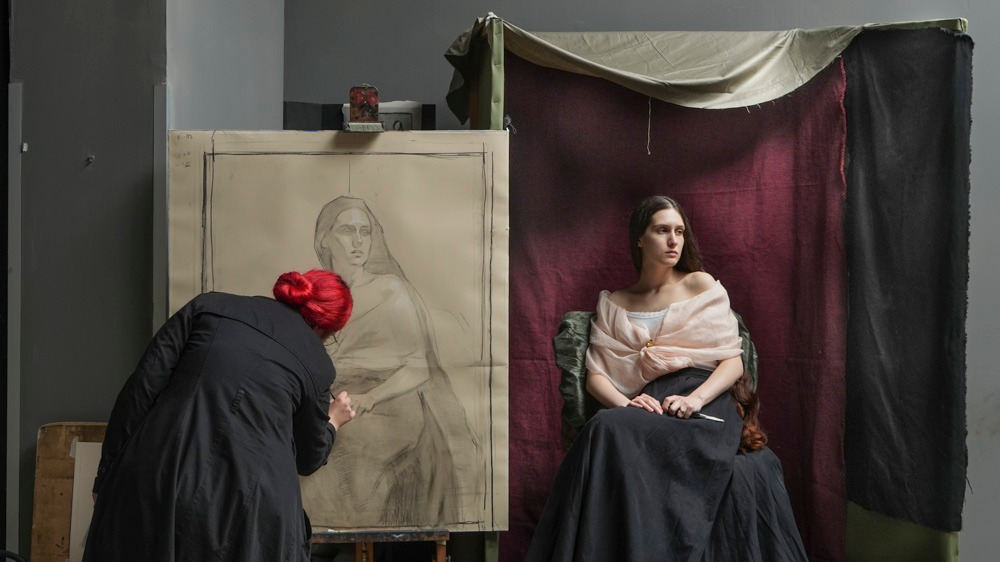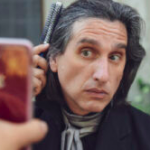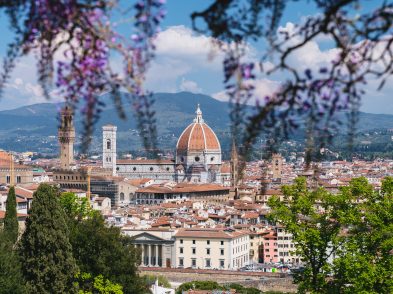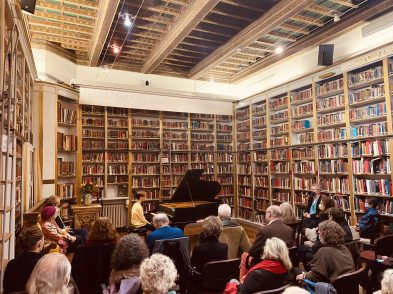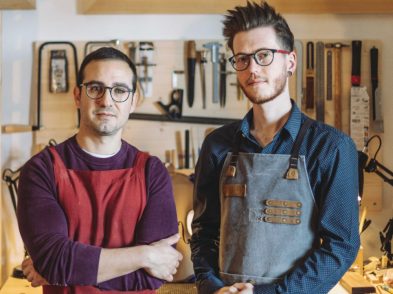While The Florence Academy of Art is a miracle of execution, excellence, history and tradition, what specifically defines its identity are the individuals who studied as part of the system of continuum and who graduated to become remarkable and respected artists in their own right as they teach the next generation. On quietly visiting the academy, wandering awestruck from studio to studio, one is observing the same process that a Michelangelo or a Rembrandt would have been part of or observed many centuries ago. The sense of timelessness and the connection of souls throughout time is very powerful. And what is left behind in each work of art is a piece of each artist, thereby offering the artist the gift of eternity and the viewer an opportunity to commune with the artist’s soul.
In speaking with the 12 artists who will be displaying their recent art at the soiree on November 5 to raise funds for The Florence Academy of Art‘s scholarship program, one discovers multiple related through lines: the idea of technique and how craft can allow one to express soul and meaning. Here are the artists in their own words.
Daniel Graves
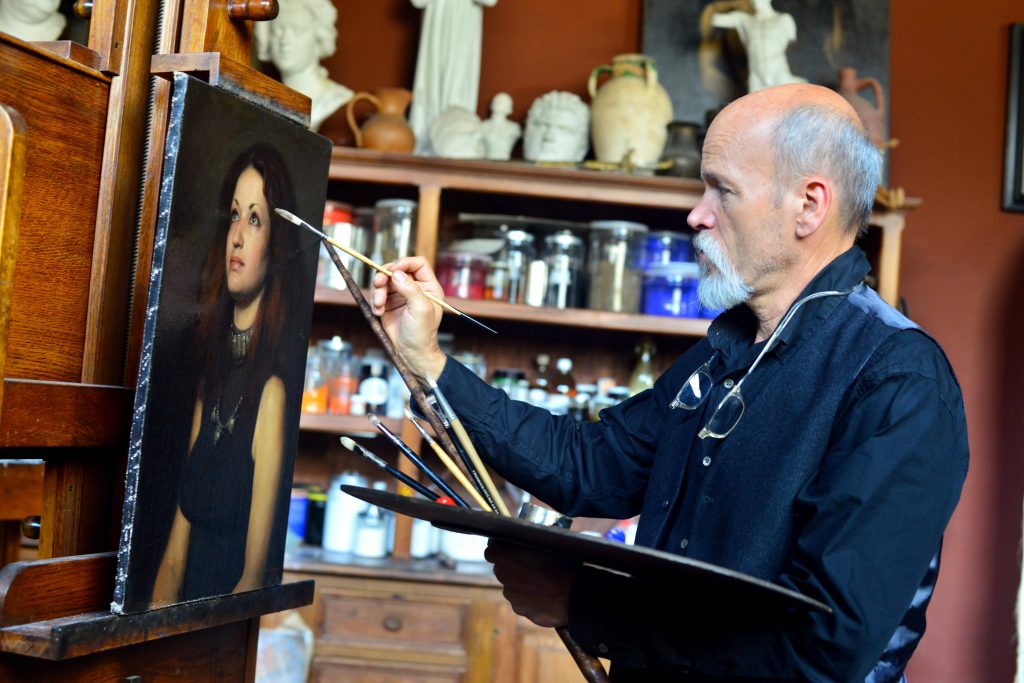
I have drawn for as long as I can remember. When I was 14, I saw a portrait by Rembrandt at the National Gallery of Art in DC, Rembrandt with a Black Cap. I had no idea what it meant, but I was riveted. As I studied and learned, I entered a world that was rich and full of humanity, and that Rembrandt was the portal through which I entered. The more I learned, the more I had to learn. The question for me has always been, How do you compose something that rivets and finds the deepest part of the soul and connects with humanity? I needed to connect to humanity. That’s been my life’s work as the founder and director of The Florence Academy of Art.
Mitch Shea
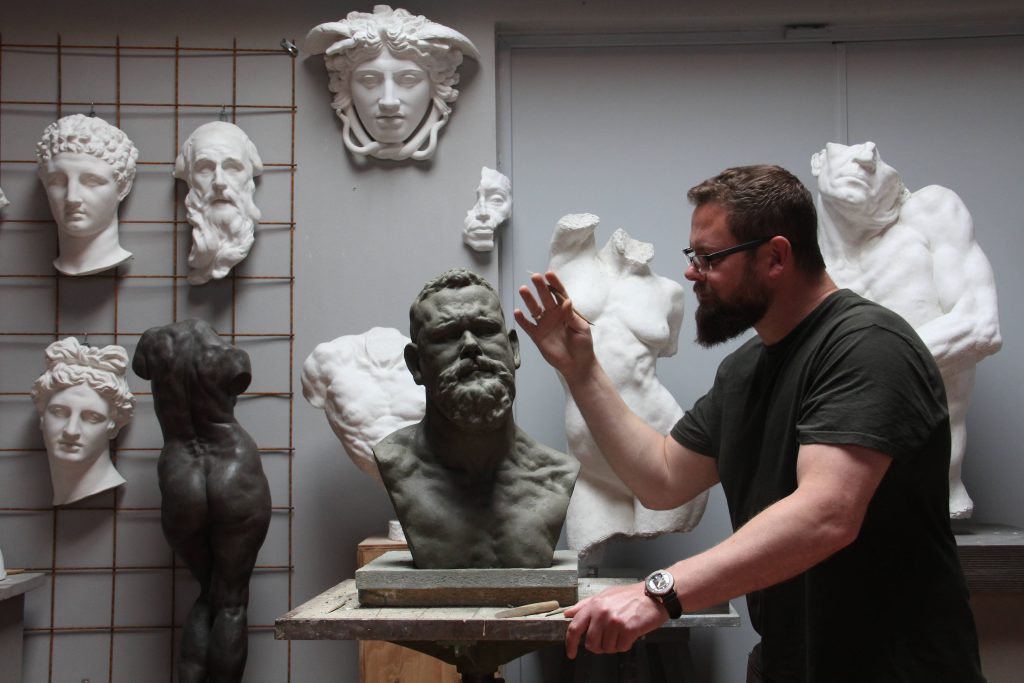
I was born in Georgia in the United States and my goal is to make a contribution to history: to preserve the tradition and myself in some form, to be part of the continuum. The process of figurative sculpture involves looking at nature in quality and design in coordination with the classical traditions of Greece. The more linear path to originality is being honest with yourself with regard to one’s own genuine interest. I always look for irony and duality in my work. You anticipate movement and flesh, but the cold material doesn’t allow one to move. Everything important I have learned in life, I learned in Florence—the arts, friends, family, food, philosophy and culture. Now I’m director of the sculpture program at FAA.
Ramiro Sanchez
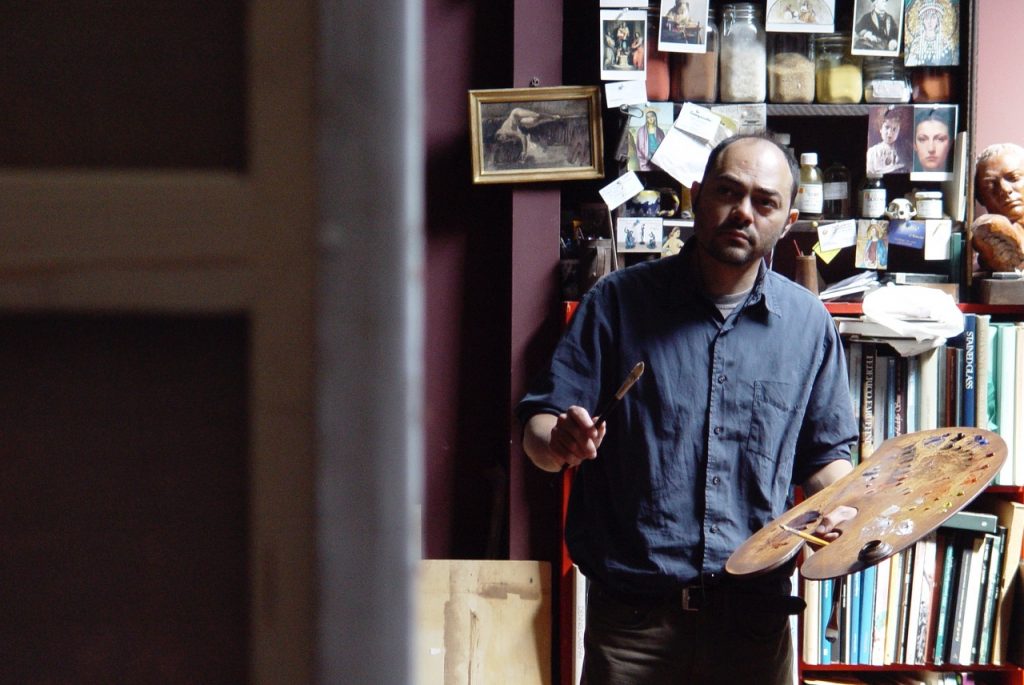
Born in Maracaibo, Venezuela, at 14, I became an apprentice to Abdon Romero, the prominent muralist painter. I ended up in Florence at 19 because Romero told me that if I was going to be the painter that I wanted to be, I needed to head to Europe. He said, Here’s a plane ticket and 1,000 euro in a bank account. Go. I graduated from the Accademia di Belle Arti, doing everything necessary to pay my way, working as an au pair, cooking and working at the San Lorenzo market. I got involved in The Florence Academy of Art, at the time a small school, and it was heaven. Twenty years later, Florence is home and I’m the advanced painting program director at the academy.
Ola Alaa El-Din
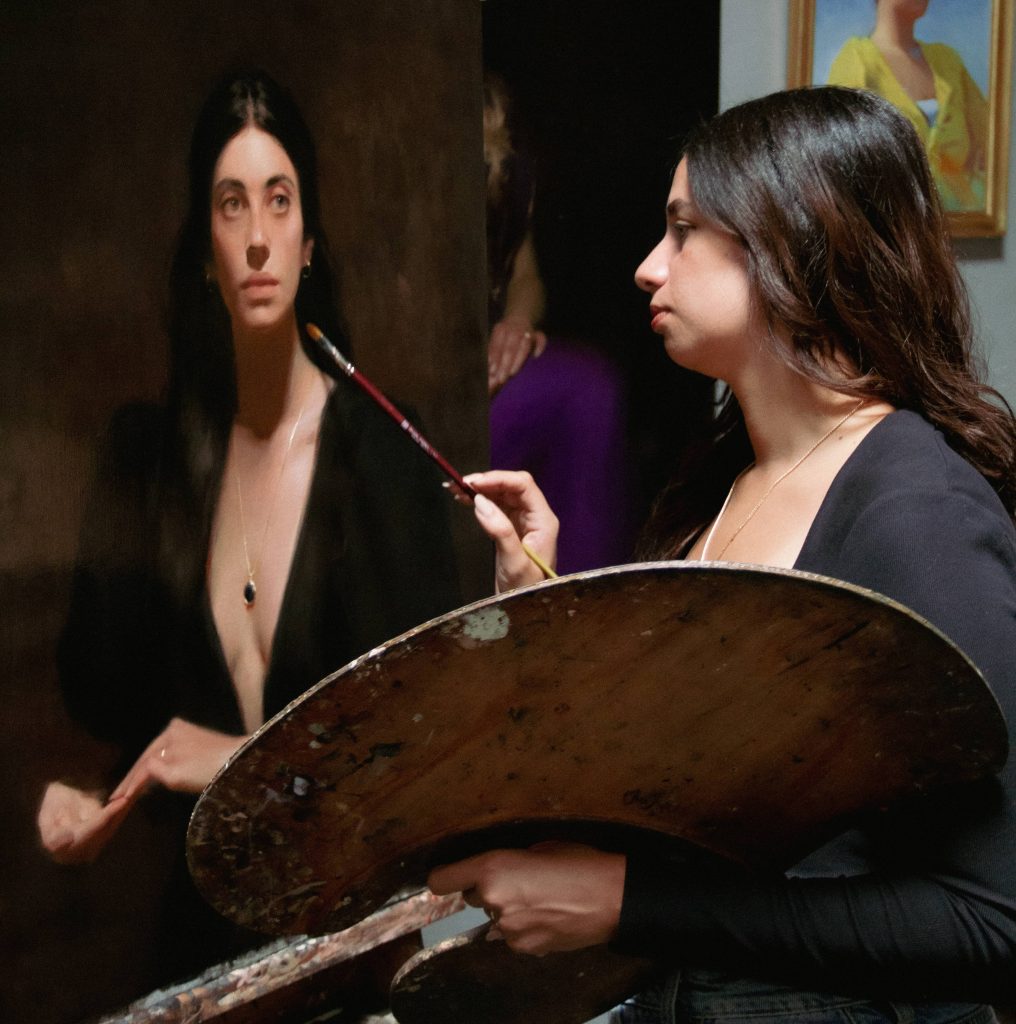
I was born in Cairo and studied to be an engineer, but I wanted to pursue classical painting. I wanted to do something that clicked with regard to education and my long-term devotion was to art. I couldn’t do this in Cairo as art schools there do not provide the same academic training. It’s unique to Florence and The Florence Academy of Art, which is why people come from all over the world, myself included, now as the director of the sculpture drawing program. Florence is a city of dreams, surrounded by timeless art and sculptures. After my diploma at the academy, I was offered the opportunity to become a graduate in residence, becoming a teacher and a studio artist. Teaching allows me to experience the journey with my students. I paint because I care about my own process: the process and journey are the most important.
Simona Dolci
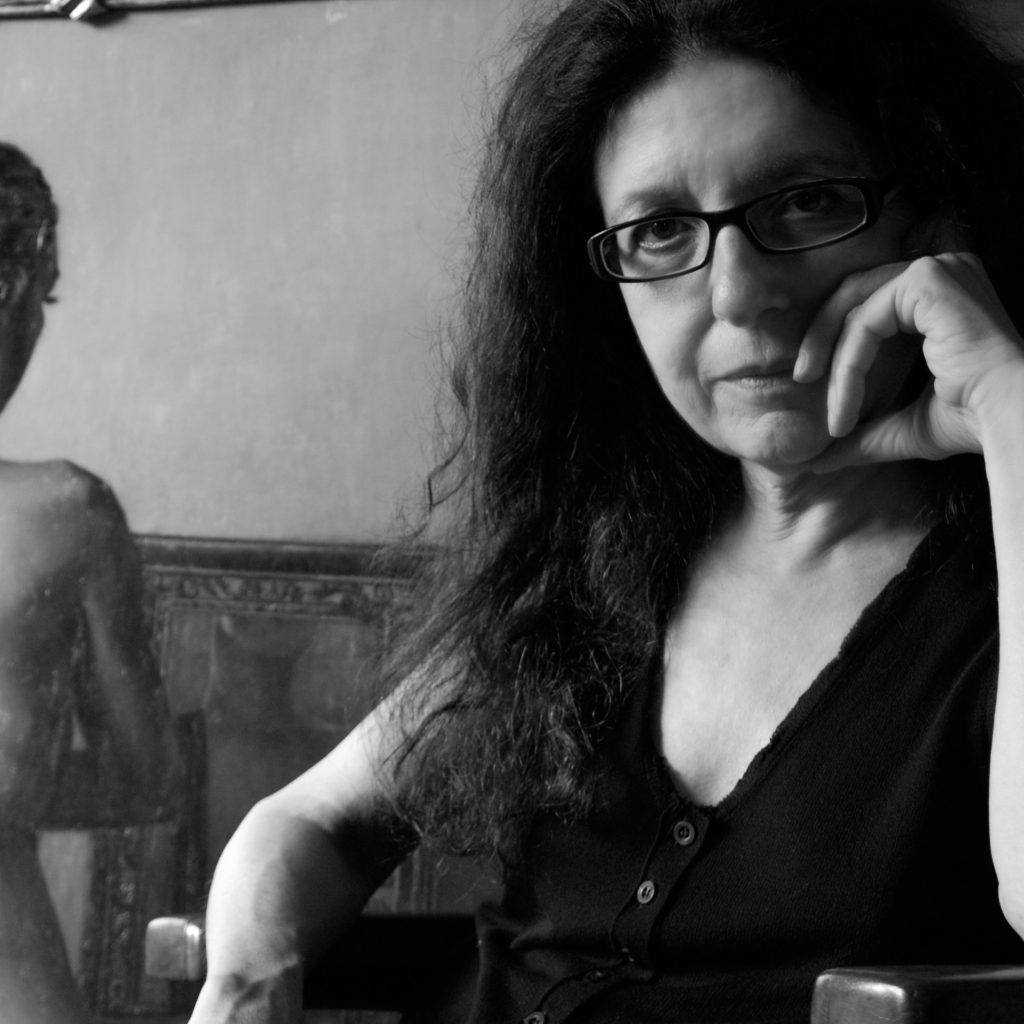
I was born in Pesaro, in Marche, but I consider myself a Florentine. My grandmother had a pied-à-terre here, but I moved to Florence when I was 17 to establish myself. I worked with my mentor, an architect by the name of Ricci, learned a lot and got a degree in architecture. Painting was my love from when I was very young, but my parents didn’t want that kind of life for me. At that point, I started to study in Florence in a small studio mentored by Nerina Simi and when she passed on, I met Daniel Graves. My painting is full of books; we need knowledge to survive. When students arrive in Florence, they meet me first in my role as the director of the intensive drawing program. The first thing they learn is how to draw properly. I’m also one of the few Italian artists at school, so I’m the link to Italian culture.
Melissa Franklin Sanchez
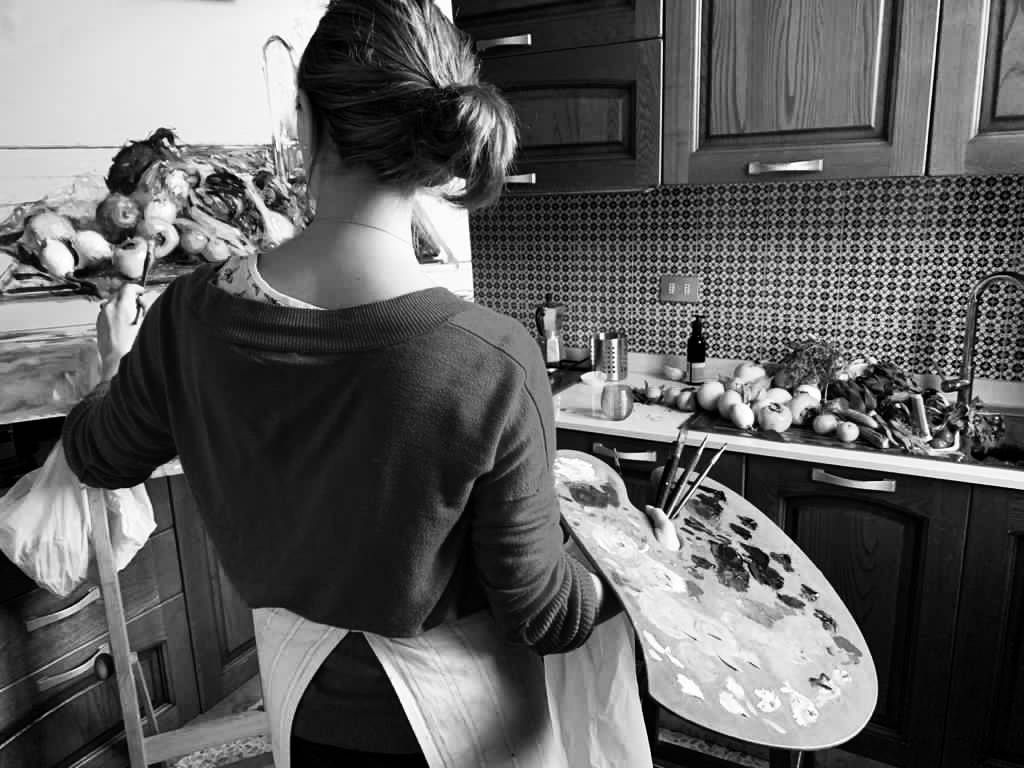
Ever since I was a child growing up in Leamington Spa, England, I was split between theatre and painting. At a certain point, realisation dawned that painting had to become my life. I met someone who introduced me to The Florence Academy of Art. I hadn’t found anything in the UK that provided traditional training. When I found the academy, I took a plane to Florence. Florence is the place that I feel the most me. It’s the environment of artists, but also the Italian way of life, where people from all over the world unite through beauty and art. The world of the artists is where we find the extraordinary among the seemingly ordinary. Now I work as director of the school’s six-week intensive workshop program in drawing, painting and art history.
Toby Neve
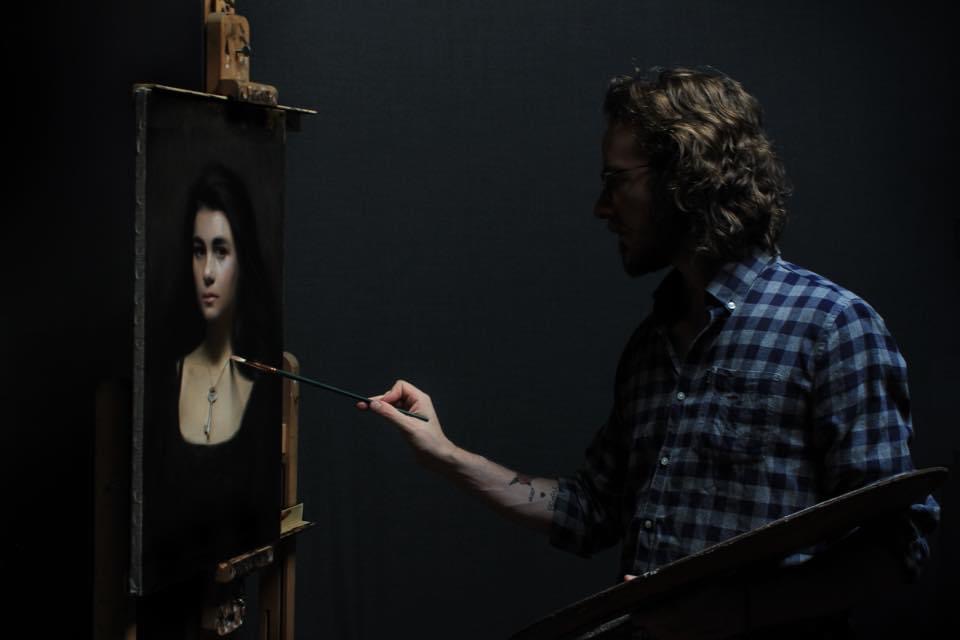
Originally from Kent in the UK, I came to Florence to study at the academy in 2012. After the three-year program, I won the fourth-year apprenticeship and stayed by Daniel’s side, teaching students about oil painting materials. Now I’m the director of the intermediate painting program. My mother is a picture frame historian at the National Gallery in London, and I grew up around beautiful paintings and frames, which imbued in me the love of art from a young age. I always knew that painting was the only thing I wanted to do. I never planned to stay, but the city’s symbiotic relationship with art is so perfect that it became very hard to leave. In my painting, I wish to hang on to my roots. The longer I paint, the more I think about the Pre-Raphaelite painters in trying to create an English lineage of painting with Florentine references.
Maudie Brady
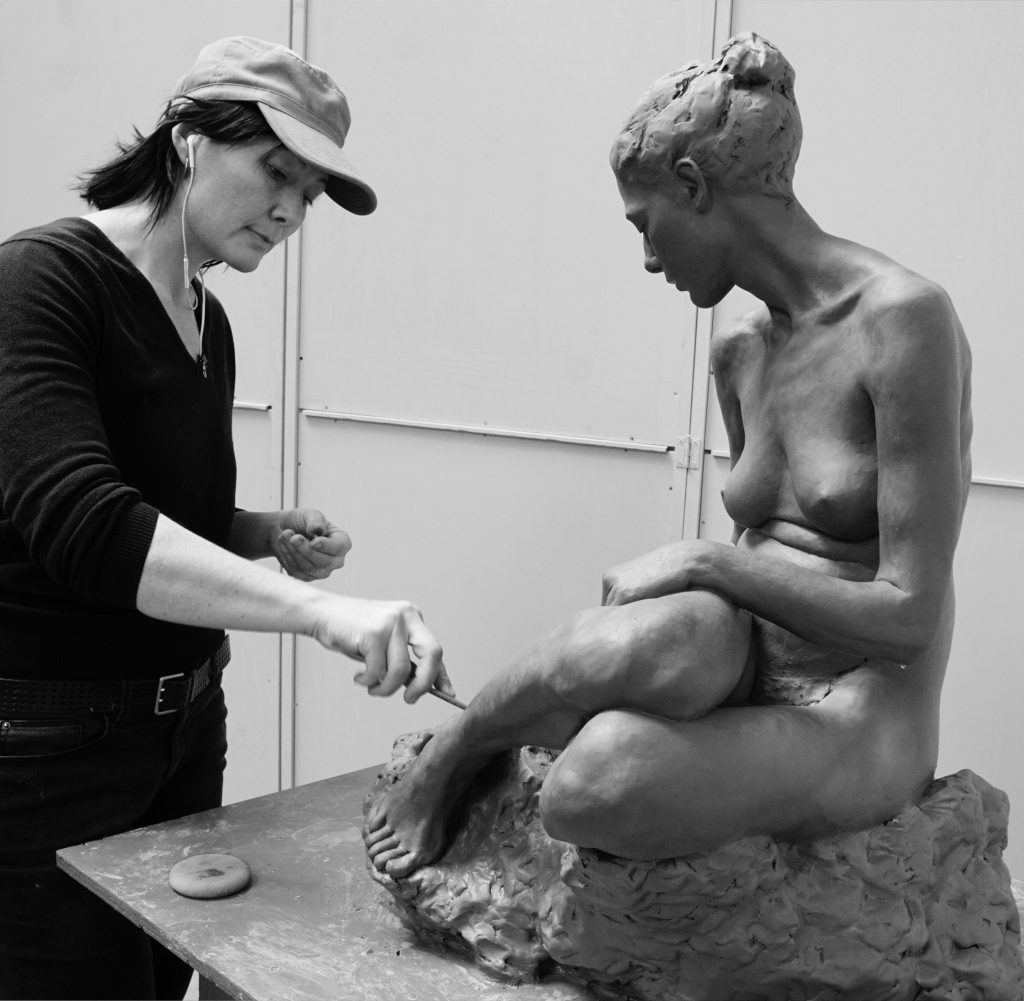
I was in New Zealand sculpting pieces for the sets of The Hobbit when an artist colleague mentioned that there was a school in Italy that taught figurative sculpture. I knew that if I wanted to develop as a fine artist, I needed to break away from the film business. I had enough money to pay for the first year and after that I had no idea what would happen. I did one year, but I realized that I had to keep studying, so I sold my house to pay for the rest and have never regretted it. In 2016, I got a job teaching in the drawing program for the sculptors, with a studio in the school as a resident teacher. After a year, I decided to go back to film as I got a job offer on Star Wars! I never thought I’d go back, but then a teaching job came up in the sculpture program. I took the job and now Florence is home, where I met and married someone, and I’m now living happily ever after, creating art as the director of anatomy and écorché sculpture.
Tanvi Pathare
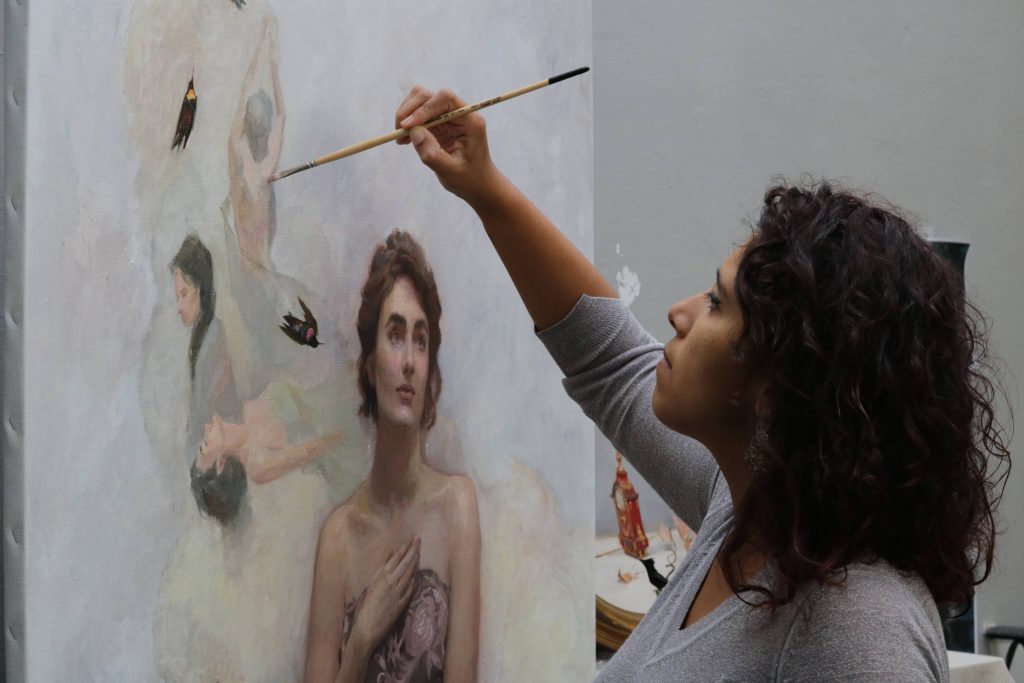
I was born in Mumbai where I did a Bachelor’s of Fine Arts in Mumbai at the Sir JJ School of Art, an old school set up by the British some 150 years ago. While the atelier was set up, the teaching wasn’t up to speed. I saw an exhibition by a Florence Academy of Art artist, which is what brought me here. I was supposed to be in Florence for 12 months and it has ended up being 13 years. In 2012, I was offered a full-time position and, in 2013, I was offered a graduate program with a studio next to Daniel Graves. Now I’m the principal instructor in the intermediate and advanced painting program.
Vitaliy Shtanko
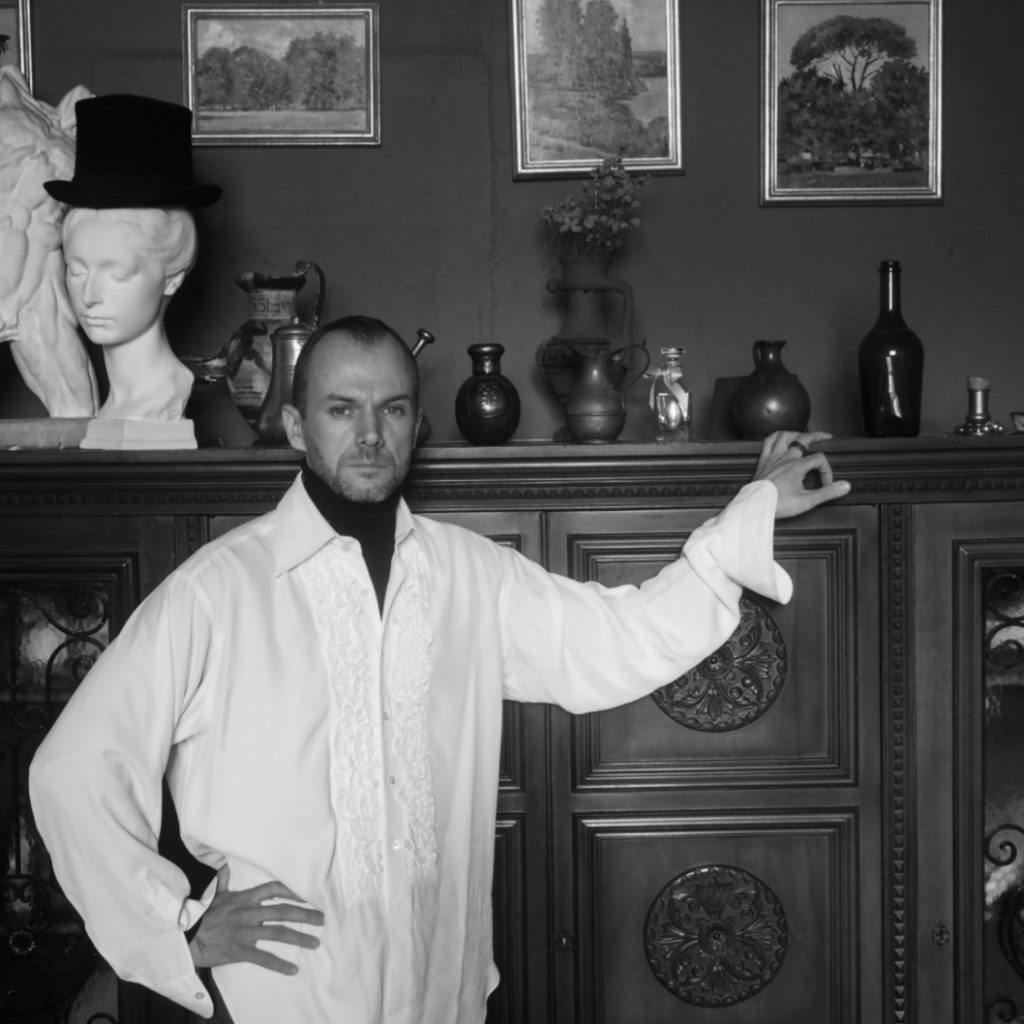
I was born in Drohobych, in western Ukraine, which was the Soviet Union back then. My father is a painter, and while I was growing up, I painted every day. I never did anything else. I studied in Ukraine from when I was 10 to 15, and the teachers suggested that I study at the famous print academy. Life wasn’t easy, the country was quite corrupt and it was almost impossible to leave and study, but we managed to leave Ukraine for Italy in 1999. A friend of my father’s, who had married an Italian (her parents had come to live in Soviet Union), helped us. As Florence had always been an art capital, it felt intuitively correct. I realized that I could be a great animator if I had the proper classical training. I was introduced to Daniel Graves and became an instructor at The Florence Academy of Art after years of study. Now I’m principal instructor for the advanced painting program.
Nicholas Chaundy
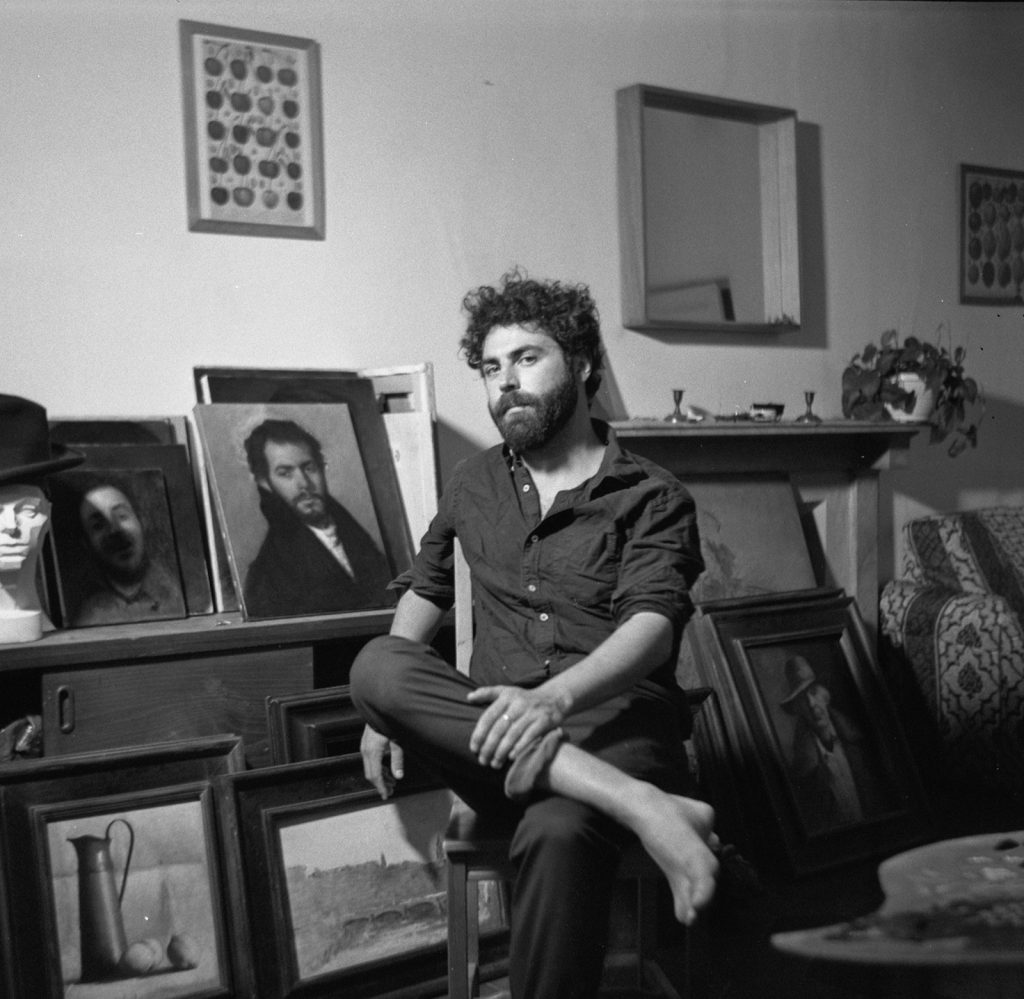
I was born in Bristol, in the UK. When I was at school, I got into darkroom photography and, when I was 16 or 17, I was introduced to painting. I began looking at paintings that were touchstones, which made me look at academic art school and soon I found myself at The Florence Academy of Art. When I completed my studies after three years, I went back to England and started working at LARA art academy. I did two years of teaching there and then The Florence Academy of Art offered a space to teach here. Today I’m a principal instructor of advanced painting. I consider Florence home. When I was back in England, those two years in between, there was this sense of a little person touching me on the shoulder telling me to return. Florence is the perfect environment for an artist. The street is inspiration: anywhere you walk in Florence, you are only steps away from something interesting.
Tom Richards
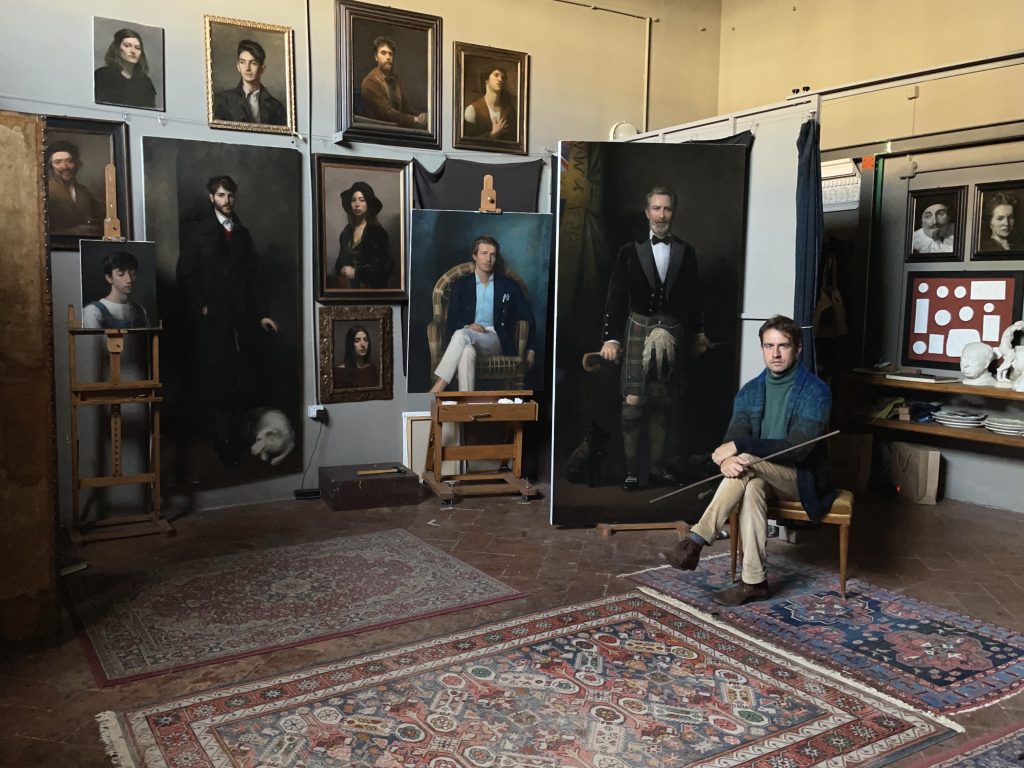
I was born in London, and even as a young boy, I loved painting and drawing. At 15, I went on a school trip to Italy. The head of our English department was obsessed with Robert Browning, and so we stayed in their house in piazza San Felice. Today, my studio is just opposite the cemetery where Browning’s wife, Elizabeth, is buried. It was while I was doing a degree in art history in the UK that I realized that I wanted to be a painter more than anything. I was determined that Florence was the place and, in 2010-11, I came back to Florence for good. It’s a city of illustrious shadows. As a visual artist, it keeps your ego in check. Inspiration is everywhere you look. Daniel and his contemporaries shifted the idea that it is in fact acceptable to be a figurative painter. The basic challenge is the same: helping young people learn their craft, but when they meet the world afterwards it’s going to be complicated. The question is, How to connect the classroom practice to the general practice is the question. In the end, Daniel made the decision that I was the right person to lead the school in the future. The thing that I share most with Daniel is a commitment to the highest examples of art, which are what I believe in as an artist and as a painter: a commitment to painting and upholding the tradition.

